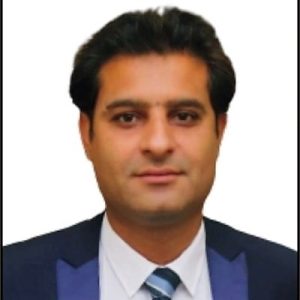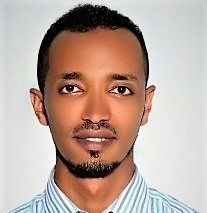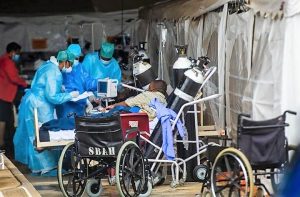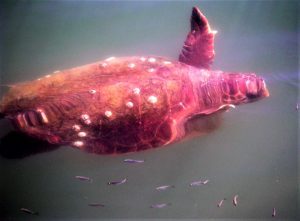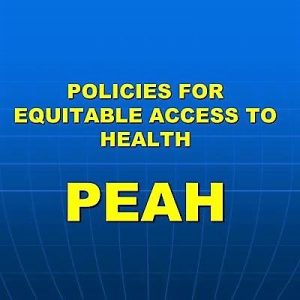Covid deniers and anti-vaccine groups will continue to spread false messaging. Continuous science-based evidence must be propagated and such elements can only be countered with hard evidence.
Health agencies must track misinformation associated with the COVID-19 in real time, and engage local communities and government stakeholders to debunk misinformation.
The scientific community members involved in advising their governments must deliver public health risk communication clearly and transparently. Research has shown that where public health messages were clear and simple, better compliance was observed.
The government leaders must lead by the example

By Nighat Khan
Visiting Professor
Barret Hodgson University, Pakistan
Effective Communication in Pandemics
Lessons Learned from Covid 19
Coronavirus Disease 2019, caused by an infection with Severe Acute Respiratory Syndrome Coronavirus 2 (SARS-CoV-2) emerged as one of the largest outbreaks globally in recent years. To this date 663,640,386 confirmed cases have been reported with 6,713093 deaths across the globe (1). It posed one of the biggest challenges for health systems in both the developed and developing world. As the cases spread rapidly and disease severity was observed, the World Health Organization declared it as global health emergency on January 30, 2020 (2).
To prevent SARS-CoV-2 from spreading, various steps such as quarantining the infected patients and their close contacts, school and workplace closure and social distancing were taken. Despite these efforts transmissions could not be contained worldwide. The WHO finally on March 11, 2020 declared it as pandemic (3) almost over 12 weeks since it was initially reported leading to massive case numbers and fatalities across all the continents.
While weeks were lost in realizing impact of Covid-19 on global health by the health organizations like WHO, governments and health ministries, the scientific community came together to collaborate and collate the data and to ramp up the efforts to find treatments and to make the production and availability of effective vaccines a possibility in a record times.
However the scientists and health workers were at the mercy of their governments to combat several challenges in effective communication. This space was claimed by several conspiracy theorists.
As the WHO was contemplating on how to communicate the very little clinical information available to its member states, a wave of misinformation and disinformation spread across the globe (4). Internet was rife with all sorts of conflicting advices and hear say. Unscientific claims like Covid being a hoax and even role of technologies like 5G in spreading this viral infection. Genuine scientists and health workers who were trying to disseminate correct scientific information faced abuse and trolling over various social media platforms. These waves of false information caused erroneous appraisals of the threat as well as maladaptive coping responses leading to fatal consequences (5, 6, 7). One of the biggest challenges during this pandemic was sifting the relevant scientific information from false distortion of facts. Such pervasive, unsolicited and dubious misinformation and disinformation was available on social media platforms globally. The Centre for Disease Control (CDC) has hence defined and differentiated between misinformation and disinformation.Misinformation is false information shared by people who do not intend to mislead others, whereas disinformation is false information deliberately created and disseminated with malicious intent (8).
Besides the WHO the member state government responses were not up to a scientific standard. This was partly due to lack of sufficient scientific data as well as marginal involvement of scientific community by the governments. In many instances these scientists were sidelined.
While the South eastern nations like Singapore, Taiwan, South Korea, which had experiences with respiratory viruses and had well designed response protocols, performed exceptionally well in containing the virus spread, enforcing facial masks and saved lives of their citizens; in contrast many countries failed to realize the gravity of situation and delivered mixed messages and were slow to respond leading to high morbidity and mortality (9).
Lack of effective communication by some member state governments even up to denial about the seriousness of epidemic made people less careful about daily practices like hand washing, social distancing and most importantly wearing a face mask. This caused havoc in some countries like Brazil and certain states in USA (10).
Another difficulty faced was false remedies. Social media forums were rife with unscientific remedies. Although certain foods like ginger, garlic and lemon have beneficial effects on human digestive system, to report them as remedies against Covid-19 virus infection lead to many susceptible people falling prey to the viral infection (11).
Realization came late with the scientists and officials working for the WHO. Various briefs and guidelines were issued regarding disinformation and social behaviors of masses. In fact lack of clarity and varying standards of communications lead to release of an important document ‘Risk-communication and community engagement (RCCE)’ by the WHO in March 2020 (12). This document quantifies the risk management and communication during Covid-19 like challenges and sets up goals.
There were some interesting observations in effective communication by the countries. In the United Kingdom, the nations such as Scotland, Wales and Ireland were quick to grasp the gravity of the situation and their ministers were at the forefront of press briefings and communicating policy statements, whereas, England lagged clarity in communication, cases rose rapidly (13). Similar discrepancies in risk communication were observed in the United States where devolved health systems with each State health policy saw clear differences in Covid-19 led morbidities and mortalities.
The WHO has ever since been engaged in holding briefs and seminars on infodemiology (14) and several updates have been made available on the WHO website.
Extensive global health community of scientists collaborated henceforth for the development of vaccines and by end 2020 a variety of vaccines were available. Here again all the wonderful work by infectious diseases workers was tainted by Covid deniers and the disinformation about vaccine side effects once again proved to be a challenge. While a vast majority of people were relieved to have various vaccines availability, a group emerged questioning the authenticity of vaccine effectiveness data. Just as misinformation emerged early on in pandemic, additional conspiracy theories emerged about Covid-19 vaccines such as mRNA component of vaccine is used as microchip by Bill Gates to control and or carry out global population surveillance, and that it causes side effects or even sudden death.
Research has shown that such false notions are extremely difficult to change. It appears that some people are more susceptible to misinformation. Marginalized communities such as ethnic minorities and immigrants fall prey to these rumours more easily than others. This is partly due to poor efforts to approach these communities or language barriers leading to vaccine hesitancy. In a research carried out by Dube et al (16), six factors contributed to an individual’s decision making process and falling prey to misinformation. These factors are knowledge information, past experiences, perceived importance of vaccination, risk perception and trust, subjective norms and religious and moral conviction. Although vaccine hesitancy is a multifaceted phenomenon affected by social, cultural and political contexts, surprisingly vaccine-hesitant people were a heterogeneous group. Hornsey et al (17), based on research conducted in 24 countries, reported it to be higher in those in conspiratorial thinking, in people with high reactance or higher levels of discomfort towards needles and or blood and strong hierarchical worldviews.
Multiple websites encouraging conspiracy theories were at the forefront of spreading fake news such as large pharmaceutical industries exaggerate the benefits of vaccines and hide the dangerous data of side effects. These sites encouraged anti-science rumours. Islam et al (18) followed and examined online platforms such as fact-checking agency websites, Facebook, Twitter and online newspapers for their impact on public health. While carrying out the content analysis they reported 2311 reports of rumours, stigma and conspiracy theories in 25 languages from 87 countries. 82% of such claims were erroneous and were related to Covid-19 illness, transmission and mortality, control measures, treatment, origin of disease and even violence. These claims had serious implications on individuals and communities.
As it appears from above discussion, various factors came to play in increasing devastating spread of Covid-19 and each contributing factor needs to be researched and framework of action designed accordingly.
- Although panic is counterproductive, health organizations and governments need to take each infectious outbreak with concern. The importance of investment in public health measures cannot be overemphasized. Countries such as Singapore, Taiwan and South Korea where effective public health surveillance systems were in place did fairly better than high income countries where public health systems were underfunded and ignored.
- The scientific community members involved in advising their governments must deliver public health risk communication clearly and transparently. Research has shown that where public health messages were clear and simple, better compliance was observed.
- The government leaders must lead by the example. Public trust regarding messages like social distancing and wearing masks were met with skepticism where leaders like Boris Johnson and Donald Trump were seen blatantly violating these messages.
- Covid-19 vaccines were developed in record amount of time due to concerted global cooperation and such collaborative efforts lead to favorable outcomes.
- Covid deniers and anti-vaccine groups will continue to spread false messaging. Continuous science-based evidence must be propagated and such elements can only be countered with hard evidence.
- The WHO document about risk-communication and community engagement provides a useful document for the researchers and government both as a foundation stone for future course of action.
- Health agencies must track misinformation associated with the COVID-19 in real time, and engage local communities and government stakeholders to debunk misinformation (18).
- Further research is imperative to study the trends and prevalence of health misinformation on various social media forums and how such information is shared to devise interventions.
References
- https://www.who.int/emergencies/diseases/novel-coronavirus-2019?adgroupsurvey={adgroupsurvey}&gclid=EAIaIQobChMIi5uzsraA_QIVi9Z3Ch1SCAFWEAAYASAAEgJ67fD_BwE
- https://www.who.int/news/item/30-01-2020-statement-on-the-second-meeting-of-the-international-health-regulations-(2005)-emergency-committee-regarding-the-outbreak-of-novel-coronavirus-(2019-ncov)
- https://www.who.int/emergencies/diseases/novel-coronavirus-2019/question-and-answers-hub/q-a-detail/coronavirus-disease-covid-19-mass-gatherings
- https://www.who.int/health-topics/infodemic#tab=tab_1
- Lee, S.K., Sun, J., Jang, S. et al.Misinformation of COVID-19 vaccines and vaccine hesitancy. Sci Rep 12, 13681 (2022). https://doi.org/10.1038/s41598-022-17430-6
- Lurie, P., Adams, J., Lynas, M., Stockert, K., Carlyle, R.C., Pisani, A. and Evanega, S.D., 2022. COVID-19 vaccine misinformation in English-language news media: retrospective cohort study. BMJ open, 12(6), p.e058956.
- Cinelli, M., Quattrociocchi, W., Galeazzi, A., Valensise, C.M., Brugnoli, E., Schmidt, A.L., Zola, P., Zollo, F. and Scala, A., 2020. The COVID-19 social media infodemic. Scientific reports, 10(1), pp.1-10.
- https://www.cdc.gov/vaccines/covid-19/health-departments/addressing-vaccine-misinformation.html
- Kim J, Moon J, Jung TY, Kim W, Yoo HC. Why Have the Republic of Korea, Taiwan, and Singapore Coped Well with COVID-19 and What Are the Lessons Learned from Their Experiences? Yonsei Med J. 2022 Mar; 63(3):296-303. doi: 10.3349/ymj.2022.63.3.296. PMID: 35184433; PMCID: PMC8860936.
- https://www.hsph.harvard.edu/news/hsph-in-the-news/what-the-u-s-did-wrong-with-covid-19/
- https://news.northwestern.edu/stories/2020/09/social-media-contributes-to-misinformation-about-covid-19/
- https://apps.who.int/iris/bitstream/handle/10665/331513/WHO-2019-nCoV-RCCE-2020.2-eng.pdf
- Cameron-Blake, E., Tatlow, H., Wood, A., Hale, T., Kira, B., Petherick, A. and Phillips, T., 2020. Variation in the response to COVID-19 across the four nations of the United Kingdom. Blavatnik School of Government, University of Oxford.
- https://covid19.who.int/region/amro/country/us
- https://www.who.int/teams/epi-win/infodemic-management/3rd-virtual-global-who-infodemic-management-conference
- Dubé, E. and MacDonald, N.E., 2022. COVID-19 vaccine hesitancy. Nature Reviews Nephrology, 18(7), pp.409-410.
- Hornsey, M.J., Chapman, C.M., Alvarez, B., Bentley, S., Salvador Casara, B.G., Crimston, C.R., Ionescu, O., Krug, H., Preya Selvanathan, H., Steffens, N.K. and Jetten, J., 2021. To what extent are conspiracy theorists concerned for self versus others? A COVID‐19 test case. European Journal of Social Psychology, 51(2), pp.285-293.
- Islam MS, Sarkar T, Khan SH, Mostofa Kamal AH, Hasan SMM, Kabir A, Yeasmin D, Islam MA, Amin Chowdhury KI, Anwar KS, Chughtai AA, Seale H. COVID-19-Related Infodemic and Its Impact on Public Health: A Global Social Media Analysis. Am J Trop Med Hyg. 2020 Oct; 103(4):1621-1629. doi: 10.4269/ajtmh.20-0812. PMID: 32783794; PMCID: PMC7543839.
———
By the same Author on PEAH
Ethical Challenges in Big Data in The Developing World
Challenges in Universal Health Coverage in Pakistan

